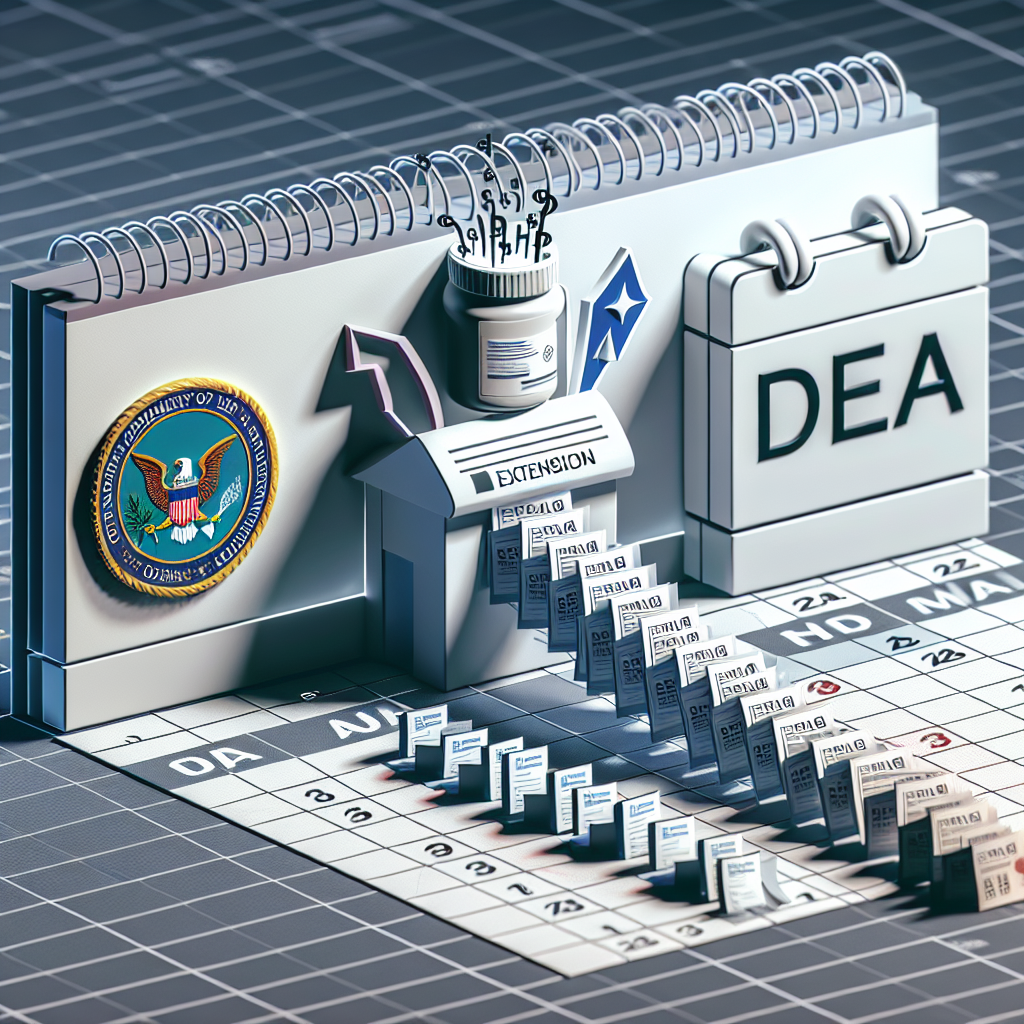DEA and HHS Announce Further Extension for Telehealth Prescriptions of Controlled Substances

The COVID-19 pandemic has significantly transformed the landscape of healthcare delivery, with telehealth emerging as a critical tool for ensuring continuity of care. In response to the growing reliance on telehealth, the Drug Enforcement Administration (DEA) and the Department of Health and Human Services (HHS) have announced a further extension for telehealth prescriptions of controlled substances. This article delves into the implications of this extension, exploring its impact on healthcare providers, patients, regulatory frameworks, and the future of telemedicine.
The Evolution of Telehealth in the Context of Controlled Substances
Telehealth has been a game-changer in the healthcare industry, offering patients and providers a convenient and efficient way to manage health conditions. However, the prescription of controlled substances via telehealth has been a contentious issue, primarily due to concerns about misuse and regulatory compliance.
Before the pandemic, the Ryan Haight Online Pharmacy Consumer Protection Act of 2008 required an in-person medical evaluation before a provider could prescribe controlled substances. This regulation aimed to curb the illegal distribution of controlled substances over the internet. However, the onset of COVID-19 necessitated a reevaluation of these restrictions to accommodate the surge in telehealth usage.
In March 2020, the DEA temporarily waived the in-person requirement, allowing healthcare providers to prescribe controlled substances via telehealth under certain conditions. This waiver was initially set to expire with the end of the public health emergency but has since been extended multiple times, reflecting the ongoing need for flexible healthcare delivery models.
The latest extension by the DEA and HHS underscores the importance of telehealth in modern healthcare and highlights the need for a balanced approach that ensures patient access while safeguarding against potential abuse.
Impact on Healthcare Providers
The extension of telehealth prescriptions for controlled substances has significant implications for healthcare providers. It offers them the flexibility to continue providing essential care to patients who may not have easy access to in-person consultations. This is particularly beneficial for patients in rural or underserved areas, where healthcare resources are often limited.
However, this flexibility also comes with increased responsibility. Providers must ensure that they adhere to all regulatory requirements and maintain high standards of care. This includes conducting thorough patient evaluations, maintaining accurate records, and being vigilant about potential signs of substance misuse.
Moreover, the extension necessitates that providers stay informed about evolving regulations and best practices in telehealth. This may require additional training and resources, which can be a challenge for smaller practices with limited capacity.
- Increased access to care for patients in remote areas
- Enhanced responsibility for regulatory compliance
- Need for ongoing education and training
Patient Access and Safety
For patients, the extension of telehealth prescriptions for controlled substances is a double-edged sword. On one hand, it enhances access to necessary medications, particularly for those with chronic conditions or mental health disorders that require ongoing management. Telehealth can also reduce the stigma associated with seeking treatment for certain conditions, encouraging more patients to seek help.
On the other hand, there are valid concerns about patient safety and the potential for misuse. The ease of obtaining prescriptions via telehealth could lead to increased instances of substance abuse, particularly if proper safeguards are not in place. It is crucial for healthcare providers to implement robust screening and monitoring processes to mitigate these risks.
Patients must also be educated about the risks associated with controlled substances and the importance of adhering to prescribed treatment plans. This requires clear communication between providers and patients, as well as access to resources and support services.
- Improved access to necessary medications
- Potential for increased substance misuse
- Importance of patient education and support
Regulatory Challenges and Considerations
The extension of telehealth prescriptions for controlled substances presents several regulatory challenges. Balancing patient access with the need to prevent misuse is a complex task that requires careful consideration of existing laws and potential reforms.
The DEA and HHS must work collaboratively with other stakeholders, including state governments, healthcare organizations, and patient advocacy groups, to develop comprehensive guidelines that address these challenges. This includes establishing clear criteria for telehealth prescriptions, implementing robust monitoring systems, and ensuring that providers have the necessary tools and resources to comply with regulations.
Additionally, there is a need for greater consistency across state lines. The patchwork of state regulations can create confusion and barriers for providers and patients, particularly those who operate or reside in multiple states. Harmonizing these regulations could facilitate more seamless telehealth delivery and improve patient outcomes.
- Need for comprehensive guidelines and monitoring systems
- Collaboration between federal and state agencies
- Importance of regulatory consistency across states
The Future of Telemedicine and Controlled Substances
The extension of telehealth prescriptions for controlled substances is a significant step towards integrating telemedicine into mainstream healthcare. However, it also raises important questions about the future of telemedicine and its role in managing controlled substances.
As telehealth continues to evolve, it is likely that we will see further innovations in technology and care delivery models. This could include the development of more sophisticated telehealth platforms, enhanced data analytics capabilities, and new approaches to patient engagement and monitoring.
However, these advancements must be accompanied by ongoing efforts to address the challenges associated with telehealth prescriptions of controlled substances. This includes ensuring that providers have access to the necessary tools and resources, implementing effective regulatory frameworks, and fostering a culture of safety and accountability.
- Integration of telemedicine into mainstream healthcare
- Potential for technological innovations and new care models
- Ongoing efforts to address challenges and ensure safety
Case Studies and Real-World Examples
To better understand the impact of the extension on telehealth prescriptions for controlled substances, it is helpful to examine real-world examples and case studies. These examples can provide valuable insights into the benefits and challenges associated with telehealth in this context.
One notable example is the use of telehealth in managing opioid use disorder (OUD). Telehealth has been instrumental in expanding access to medication-assisted treatment (MAT) for OUD, particularly in rural areas where access to specialized care is limited. Studies have shown that telehealth can improve treatment retention and outcomes for patients with OUD, highlighting its potential as a tool for addressing the opioid crisis.
Another example is the use of telehealth in mental health care. The extension of telehealth prescriptions for controlled substances has enabled more patients to access necessary medications for conditions such as anxiety and depression. This has been particularly important during the pandemic, as many individuals have experienced increased stress and mental health challenges.
- Telehealth in managing opioid use disorder
- Improved access to mental health care
- Insights from real-world examples and case studies
Conclusion
The extension of telehealth prescriptions for controlled substances by the DEA and HHS is a significant development in the ongoing evolution of telemedicine. It reflects the growing recognition of telehealth as a vital component of modern healthcare delivery and underscores the need for a balanced approach that ensures patient access while safeguarding against potential misuse.
As telehealth continues to evolve, it is crucial for stakeholders to work collaboratively to address the challenges associated with telehealth prescriptions of controlled substances. This includes developing comprehensive guidelines, implementing effective monitoring systems, and fostering a culture of safety and accountability.
Ultimately, the success of telehealth in managing controlled substances will depend on the ability of providers, regulators, and patients to adapt to this new landscape and embrace the opportunities it presents. By doing so, we can ensure that telehealth remains a valuable tool for improving patient outcomes and enhancing access to care.





